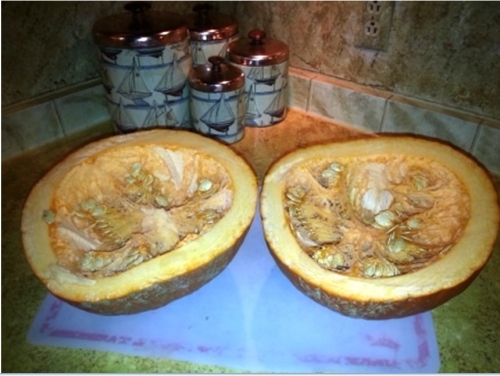
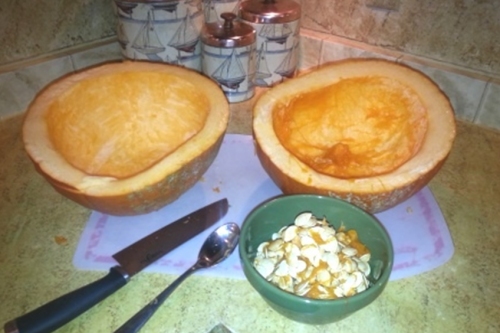
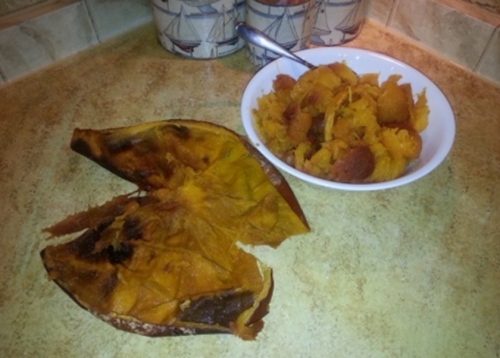
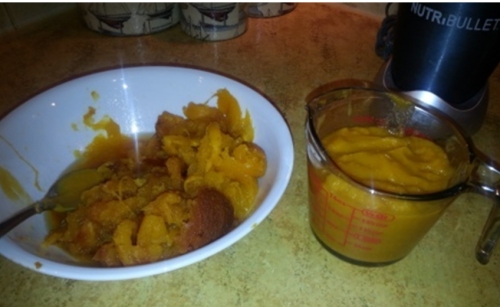
*Preserving Pumpkins*
By: TooshieGalore
06 November 2014
Pumpkin is sometimes difficult to preserve with home canning because of the thickness of the puree, it's hard to pressurize it correctly. I dehydrate punpkin for long-term storage, but my favorite preservation method for regular use is freezing. It's easy, here's how:




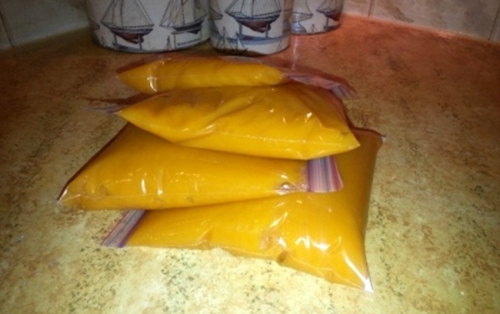
Pumpkin is considered a SuperFood. It's high in fiber, with an abundance of potassium, pantothenic acid, magnesium, and vitamin C and E.
Checkout the many recipes online for pumpkin pies, cheesecake, breads, muffins, and cookies. Add a dollup in your breakfast oatmeal or make a pumpkin butter.
Now for the seeds: I save about 1/4 cup for planting next year's crop and I eat the remainder.
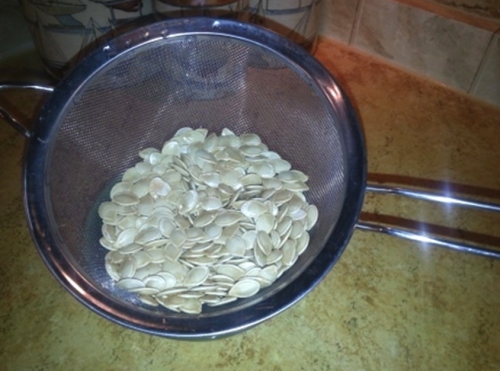
Seeds To Eat: Because I already have the oven on and heated, I roast at 170F for 20 minutes in the oven, but a dehydrator works equally well. Spread seeds on an ungreased cookie sheet in a single layer, but again don't worry about being perfect. Toss the seeds around with a spatula every so often so they all get toasted evenly. Sprinkle with sea salt, garlic or garlic-salt to taste.
Pumpkin seeds are nutritional powerhouses, high in manganese, phosphorous, copper, magnesium, zinc. But even if your family prefers a more nutty pumpkin seed roasted at the higher temperature and time, it's still a healthier snack than chips or other choices. Two ounces yields 20% RDA of protein and 16% of iron.
Use as you would other nuts. Scoop them up and eat 'em like peanuts. But I prefer to eat them chopped or ground. Add chopped pumpkin seeds to sautéed vegetables and on top of mixed green salads. Add ground seeds to salad dressings, cereals, and oatmeal raisin cookie and granola recipes. Ground seeds also make nutritional filler in hamburgers and meatloaf.
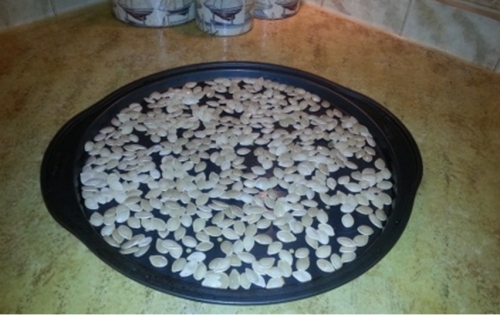
Seeds to Save: Place seeds in a bowl of water and soak overnight. In the morning, scoop out the floating seeds and throw them into composting. Floaters are not viable seeds. Spread the sinkers on a paper towel and allow to dry for several days. After thoroughly dry, label and store in a cool dry place.
My 8 lb. pumpkin was on sale for $2 at the farmer's market. Except for baking and cooling time, processing, including cleanup, was less than 20 minutes and yielded 4 2-cup bags of puree and ½ cup seeds.
Whether you have an abundant garden pumpkin patch or you find a great pumpkin sale at the grocery, it's worth preserving pumpkins to enjoy all year.
Notes:
www.alpharubicon.com
All materials at this site not otherwise credited are Copyright © 1996 - 2014 Trip Williams. All rights reserved. May be reproduced for personal use only. Use of any material contained herein is subject to stated terms or written permission.